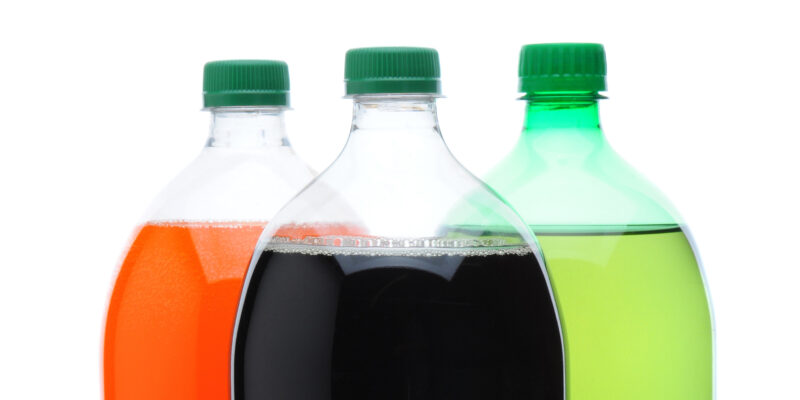.jpg)
- 24 November 2023
- 1077 Views
Overview:
Paraxylene is also known as p-Xylene and primarily serves as a building-block chemical to create PET plastics and polyester. Bottles made from PET plastic are widely used as containers for water, sodas and other beverages because PET is lightweight, shatter-resistant and strong.
Most people will not come into direct contact with this chemical in everyday life, since it is a feedstock chemical used to manufacture other chemicals. Paraxylene is largely handled in industrial settings and industrial workers who use this chemical must follow safety protocols outlined in their Safety Data Sheet to avoid harmful amounts of the vapor released from paraxylene.
Paraxylene is flammable, so proper storage and handling is vital to avoid potential ignition.
Uses & Benefits:
Paraxylene is widely used as a feedstock (or “building block”) to manufacture other industrial chemicals, notably terephthalic acid (TPA), purified terephthalic acid (PTA) and dimethyl-terephthalate (DMT). TPA, PTA and DMT are used to manufacture polyethylene terephthalate (PET) polyesters, a kind of plastic.

Bottles made from PET plastic are widely used as containers for water, sodas, and other beverages because PET is lightweight, shatter-resistant and strong. In addition, PET helps keep the fizz in carbonated beverages because it has strong carbon dioxide barrier properties.
Other PET uses include: containers for toiletries, cosmetics and other consumer products; fabrics for curtains, upholstery, and clothing; films for x-rays, magnetic tapes, photographic film and electrical insulation; and packaging for boil-in bags, processed meats, shrink films and blister packs.
Safety Information:
Paraxylene is predominantly an industrial chemical. Therefore, most opportunities for human exposure to paraxylene occur at the industrial facilities where it is handled.
Because paraxylene is flammable, industrial facilities handle it with safety in mind, with procedures to avoid exposure to possible ignition sources and by ventilating storage areas. Industrial facilities also have procedures to avoid accidental release into the environment and to store paraxylene in an appropriate containment system in a cool, well-ventilated area.
Paraxylene is generally considered to have low acute toxicity at levels found in the workplace. Exposure to high levels of paraxylene vapors can lead to drowsiness and dizziness, and contact exposure to the skin and eyes may result in dry skin, redness and irritation. If swallowed and then coughed up and inhaled into the lungs, paraxylene can cause lung damage or chemical pneumonia.
Workers with questions about paraxylene should consult the Safety Data Sheet and their employer for more information.

Traditional feed sources:
In some regions of the world, there is not enough heavy naphtha to reform into aromatics, creating an incentive to use non-traditional sources of feed. In actuality, some of the non-traditional feeds are more economical to use in any case, making these an important part of a competitive operation.
Among the non-traditional sources of xylenes are those contained within fluid catalytic cracking (FCC or RFCC) gasoline fractions. These aromatics already exist, but happen to be comingled with sulphur and olefins, which are difficult to remove by conventional techniques.
New process technology2 is now available to purify these aromatics by direct extraction from the raw FCC gasoline. This is in contrast to the practice used by several major producers, which recycles the FCC gasoline back through the naphtha hydrotreater and reforming units as an indirect means of purification and recovery. In such cases, the utility of the NHT/reformer is wasted.
The trend in industry is to operate the FCCU at higher severity to yield more propylene. The higher severity operation also increases the aromatics yield, making this source of raw material especially valuable. A beneficial side effect of aromatics extraction from the raw gasoline is that the aromatics content of the gasoline is diminished, as well as eliminating the problem of benzene in gasoline. Sulphur is removed to the specifications for Euro 5 or US Tier 3 grades of gasoline without any loss of octane value, as the unsaturated components never go to the hydrotreater units.
Another non-traditional source of aromatics derives from the olefinic fraction of FCC gasoline. It is convenient to create aromatics by aromatisation3 of the olefins from the C4-C8 boiling range, as these components are more reactive than paraffins from naphtha or condensate. The C4-C5 olefins can be obtained by direct fractionation out of the FCC unit, while the C6-C8 fraction comes from the raffinate of the extraction unit. Both of these can be combined to the aromatisation unit, which coincidently reduces gasoline production from the FCC unit.
A third non-conventional source of aromatic raw material comes from methanol via the methanol to aromatics (MTA) process. Methanol can also supplement aromatics production via the toluene methylation process. Naphtha is a product of crude oil, while methanol is produced from natural gas. There are long-term pricing trends which favour gas-based chemicals over oil-based chemicals, so that these methods can become a major contributor to the pool of xylenes.
